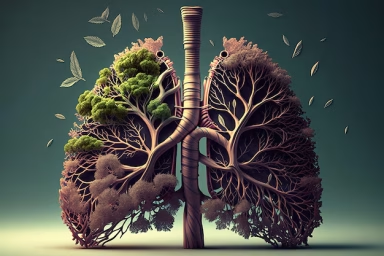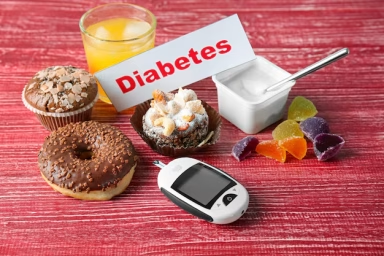- Home
- About Us
- Services
- Treatments
- Acid Reflux
- Allergic Rhinitis
- Alcoholic Fatty Liver
- Ankylosing Spondylitis
- Anxiety / Stress
- Arthritis
- Asthma
- Cervical Spondylitis
- Celiac Infection
- Colitis
- Constipation
- Dermatitis
- Detox Programme
- Diabetes (Madhumeha)
- Hair Fall
- Headache
- Hormonal Imbalance
- Hypertension
- Insomnia
- Irritable Bowel Syndrome
- Lungs Disease
- Migraine
- Neurological Disorder
- Non Alcoholic Fatty Liver
- Obesity Management
- Pain Management
- PCOD
- PCOS
- Sciatica Pain
- Sinusitis
- Skin Disorder
- Slip Disc
- Stress Management
- Thyroid
- Weight Management
- Techno-Ayurveda
- Media
- Blog
- Contact Us

Non Alcoholic Fatty Liver

Deep Detoxification
Deep detoxification with Panchakarma therapy involves a series of Ayurvedic treatments like Virechana, Basti, and Abhyanga to remove toxins, balance doshas, enhance digestion, and rejuvenate the body, mind, and spirit, promoting overall health, vitality, and disease prevention.

Balancing Doshas
Panchakarma therapy balances the doshas—Vata, Pitta, and Kapha—by using personalized treatments like Virechana, Basti, and Abhyanga. These therapies detoxify the body, restore harmony, improve digestion, and promote physical and emotional well-being, ensuring optimal health and vitality.

Supporting Liver Function
Panchakarma therapy supports liver function by detoxifying the liver with treatments like Virechana and Basti. These therapies eliminate toxins, reduce inflammation, and improve bile flow, enhancing liver health, metabolism, and overall detoxification, promoting better digestive and liver function.

Strengthrning Digestion and Metabolism
Panchakarma therapy strengthens digestion and metabolism by clearing toxins, balancing doshas, and revitalizing digestive fire (Agni) through treatments like Virechana, Basti, and Abhyanga. This enhances nutrient absorption, improves digestion, boosts metabolism, and supports overall digestive health and vitality.
Understanding Non Alcoholic Fatty Liver
In NAFLD, there is an abnormal buildup of fat in liver cells that is not related to alcohol consumption. It can cause the liver to become inflamed, leading to damage over time. The two primary types of NAFLD are:
- Simple Fatty Liver (Steatosis): In this early stage, there is a buildup of fat in the liver cells, but little or no inflammation. It often does not cause symptoms.
- Non-Alcoholic Steatohepatitis (NASH): In NASH, the fatty liver becomes inflamed, and there is liver cell injury. NASH can progress to more severe conditions like cirrhosis or liver failure.
The liver plays a critical role in detoxifying the body, digesting fats, producing bile, and metabolizing nutrients. In NAFLD, fat buildup in liver cells impairs these functions, leading to symptoms such as fatigue, abdominal discomfort, and, in severe cases, jaundice and swelling in the abdomen and legs.
Symptoms of Non Alcoholic Fatty Liver
1. Severe Tiredness
2. Yellowing Of the Skin or Eyes
3. Dark Patches on The Skin
4. Weight Loss
5. Spiderlike Blood Vessels on The Skin
6. Pain or Discomfort
7. Long-Lasting Itching
Common Causes of Non Alcoholic Fatty Liver

Obesity
Obesity is a major cause of non-alcoholic fatty liver disease (NAFLD), as excess body fat, particularly visceral fat, increases insulin resistance. This leads to fat accumulation in liver cells, impairing liver function and increasing the risk of NAFLD progression.

Type 2 Diabetes
Non-alcoholic fatty liver disease (NAFLD) is common in people with Type 2 diabetes due to insulin resistance, which promotes fat accumulation in the liver. Elevated blood sugar and insulin levels, along with obesity and metabolic issues, further contribute to liver fat buildup.

Genetics
Exposure to irritants like smoke, strong odors, pollution, and chemicals can trigger allergic rhinitis. These irritants inflame the nasal passages, leading to symptoms such as sneezing, congestion, runny nose, and itchy eyes, worsening allergy reactions.
Panchakarma Ayurvedic Treatment for Non Alcoholic Fatty Liver
Non-Alcoholic Fatty Liver Disease (NAFLD) is a condition where fat builds up in the liver cells without the influence of alcohol consumption. It is commonly associated with metabolic disorders such as obesity, insulin resistance, and type 2 diabetes. NAFLD can progress to more serious liver conditions, such as Non-Alcoholic Steatohepatitis (NASH), cirrhosis, or liver failure if left untreated. As NAFLD is often related to lifestyle factors such as poor diet, lack of exercise, and stress, Ayurvedic treatment—especially Panchakarma therapy—offers a holistic and effective way to address this condition by promoting detoxification, balancing doshas, and restoring overall liver health.
Ayurvedic Perspective on Non-Alcoholic Fatty Liver Disease
In Ayurveda, the liver is closely associated with the Pitta dosha (fire element), which governs metabolism and transformation. When Pitta is imbalanced, it can lead to digestive disturbances, accumulation of toxins (Ama), and liver dysfunction. Additionally, the buildup of Kapha dosha (water and earth elements) can contribute to fat accumulation and sluggish metabolism, both of which play a role in the development of fatty liver.
The causes of NAFLD from an Ayurvedic viewpoint include:
- Imbalance of Pitta and Kapha doshas: Excess Pitta can lead to inflammation in the liver, while excess Kapha can cause the buildup of fat in the liver.
- Poor digestion (weak Agni): When digestion is weak, undigested food leads to the creation of toxins (Ama), which can accumulate in the liver and disrupt its function.
- Poor lifestyle: Sedentary lifestyle, unhealthy diet, and stress are factors that contribute to the development of NAFLD by disrupting the balance of the doshas and creating toxins in the body.
Panchakarma therapy works by cleansing the body of accumulated toxins, improving liver function, reducing fat accumulation, and restoring balance to the doshas, particularly Pitta and Kapha.
Dietary Guidelines for NAFLD
In Ayurveda, diet is crucial for managing NAFLD. Key dietary guidelines include:
- Avoid fried and fatty foods, especially those high in trans fats and processed sugars.
- Consume light, easily digestible foods such as soups, stews, and whole grains like quinoa and rice.
- Include detoxifying foods like leafy greens, beets, cucumbers, and bitter vegetables.
- Use herbs and spices like turmeric, cumin, coriander, and ginger to support digestion and liver health.
- Hydrate with herbal teas like dandelion root tea, turmeric tea, and ginger tea to support liver detoxification.
FAQs of Non Alcoholic Fatty Liver
NAFLD is the buildup of fat in the liver in people who drink little to no alcohol, often linked to obesity, diabetes, and metabolic syndrome.
Key causes include obesity, insulin resistance (common in Type 2 diabetes), poor diet, genetics, and high cholesterol. These factors contribute to fat buildup in liver cells.
Diagnosis typically involves blood tests to assess liver function, imaging tests (like ultrasound), and sometimes a liver biopsy to evaluate the extent of fat accumulation and possible liver damage.
